GATE Mock Test Electronics Engineering (ECE)- 6 - Electronics and Communication Engineering (ECE) MCQ
30 Questions MCQ Test GATE ECE (Electronics) Mock Test Series 2025 - GATE Mock Test Electronics Engineering (ECE)- 6
Direction: Study the following pie-chart and tables carefully and answer the questions given below.
Total Number of email received by the organization = 90000

Ratio of Read emails to Unread emails received by the organization
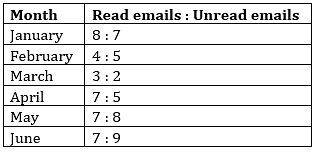
What is the ratio of the number of emails read in January to those unread in the month of April in the organization?


The shape in the figure given below is folded to form a box. Choose from the alternatives (1), (2), (3) and (4), the boxes that are similar to the box formed from the shape below.




| 1 Crore+ students have signed up on EduRev. Have you? Download the App |
In the following question, out of the given four alternatives, select the one which is opposite in the meaning of the given word.
Scurrilous
What is the chance that a leap year, selected at random, will contain 53 Sundays?
Direction: Study the following information carefully and answer the questions given below:
P, Q, R, S, T, U, V and F are sitting around a circle facing the centre. U is third to the right of Q, who is third to the right of F. P is third to the left of F. R is fourth to the left of P. T is third to the right of S. S is not a neighbour of P.
Four of the following five are similar in a certain way based on their positions in the seating arrangement and so form a-group. Which of the following does not belong to that group?
In a group, the ratio of the number of boys to the number of girls is P. The ratio of the number of girls to the number of boys is Q, then P + Q is always
In a school, 12th class consists of 30% male students of which 30% male students failed in the class. Total 82% students passed in 12th examination out of 900 students. Calculate the total number of female passed students?
A cube of side 10 cm is coloured red, with a 2 cm wide green strip along all the sides on all the faces. The cube is cut into 125 smaller cubes of equal sizes. How many cubes have at least two green faces each?
Direction: In the following number series, only one number is wrong. Find out the wrong number.
17 25 34 98 121 339
Directions: In the question given below, a statement is followed by three courses of action labelled (A), (B) and (C). A course of action is a step or administrative decision to be taken for improvement, follow-up or further action in regard to the problem, policy, etc. On the basis of the information given in the statement, you have to assume everything in the statement to be true and then decide which of the suggested courses of action logically follow(s) for pursuing.
Statement: Many political activists have decided to stage demonstrations and block traffic movement in the city during peak hours to protest against the steep rise in prices of essential commodities.
Courses of action:
(A) The Govt. should immediately ban all forms of agitations in the country.
(B) The police authority of the city should deploy additional forces all over the city to help traffic movement in the city.
(C) The state administration should carry out preventive arrests of the known criminals staying in the city.
In the following figure, the J and K inputs of all the four Flip-Flops are made high. The frequency of the signal at output Y is

For the function e-x, the linear approximation around x = 2 is
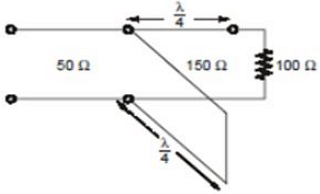
Consider the lossless transmission line circuit shown in the figure, The voltage standing wave ratio on 50 Ω line is given by
The Laplace transform of a function is(S + 1)/S(S + 2) . The initial and final values, respectively, of the function are
Given x(t) = e−tu(t). Find the inverse laplace transform of e−3s X(2s).
Under low level injection assumption, the injected minority carrier current for an extrinsic semiconductor is essentially the
Find the differential equation of the system described by the transfer function given as:

Choose proper substitutes for X and Y to make the following statement correct.
Tunnel diode and avalanche photo diode are operated in X bias and Y bias, respectively.
The built-in potential of an abrupt p-n junction is 0.75 V. If its junction capacitance (Q) at a reverse bias (VR) of 1.25 V is 5 pF, the value of CJ (in pF) when VR = 7.25 V is________.
Consider the state equation for a system given below.

Which of the following conditions is true for complete controllability?
Assume electronic charge q = 1.6×10−19C,kT/q = 25mVand electron mobility μn = 1000cm2/V−s.If the concentration gradient of electrons injected into a P-type silicon sample is 1×1021 cm4,the magnitude of electron diffusion current density (in A/cm2) is _________.
Without any additional circuitry, an 8 : 1 MUX can be used to obtain
The voltage gain of an amplifier is 100. A negative feedback is applied with β=0.04. The overall gain of the amplifier is:
In the circuit shown, the device connected to Y5 can have address in the range
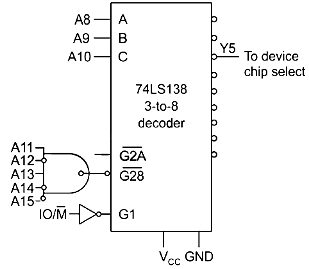
Consider two resistors of 50 kΩ and 100 kΩ at room temperature of 27 OC. These resistors are passing a signal of bandwidth 50 kHz. Let N1 and N2 be the noise voltage generated while operating in series and parallel configuration, respectively. Determine N1 and N2.
The transfer function of a phase-lead compensator is given by Gc = ![]() , where T > 0. What is the maximum phase shift of the compensator?
, where T > 0. What is the maximum phase shift of the compensator?
The amplitude of a random signal is uniformly distributed between -5 V and 5 V.
If the signal to quantization noise ratio required in uniformly quantizing the signal is 43.5 dB, the step size (in V) of the quantization is approximately
During transmission over a certain binary communication channel, bit errors occur independently with probability p. The probability of at most one bit in error in a block of n bits is given by
For a telephone line, β= 0.02rad/km. If frequency is 1 kHz. Calculate time taken to travel 3.14 km by the wave in µs
The Laplace transform of i(t) is given by I(s) = 2/s(1 + s) . As t ⟶∞, the value of i(t) tends to be (Answer up to the nearest integer)
|
25 docs|263 tests
|
|
25 docs|263 tests
|


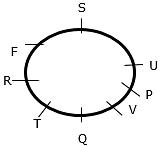
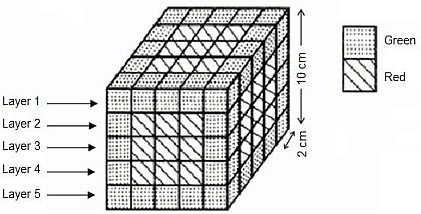




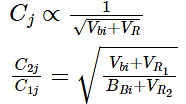
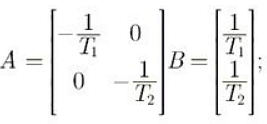
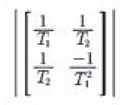 must not be equal to zero;
must not be equal to zero;
















